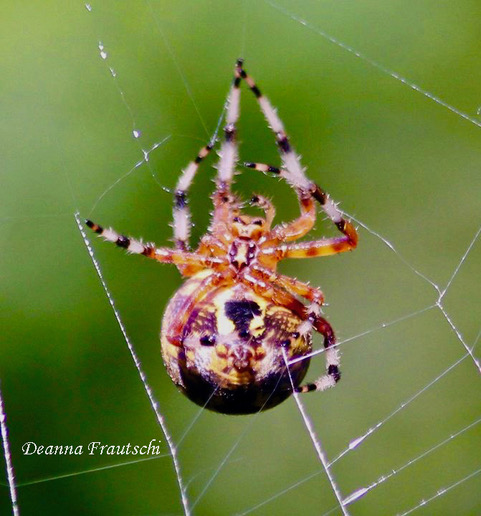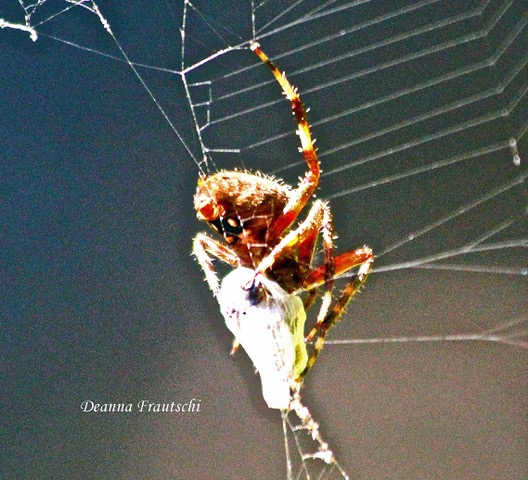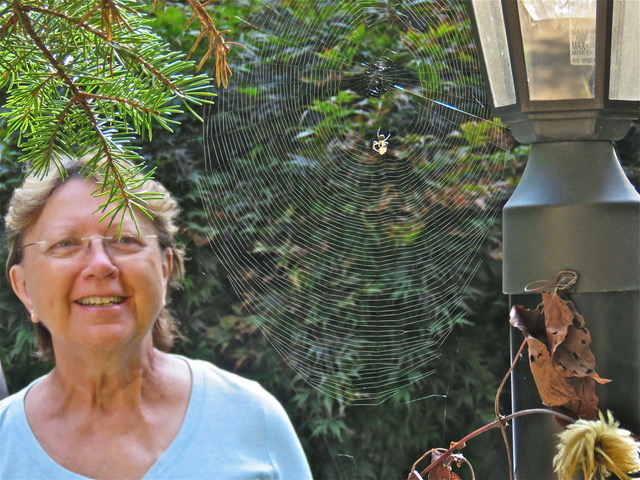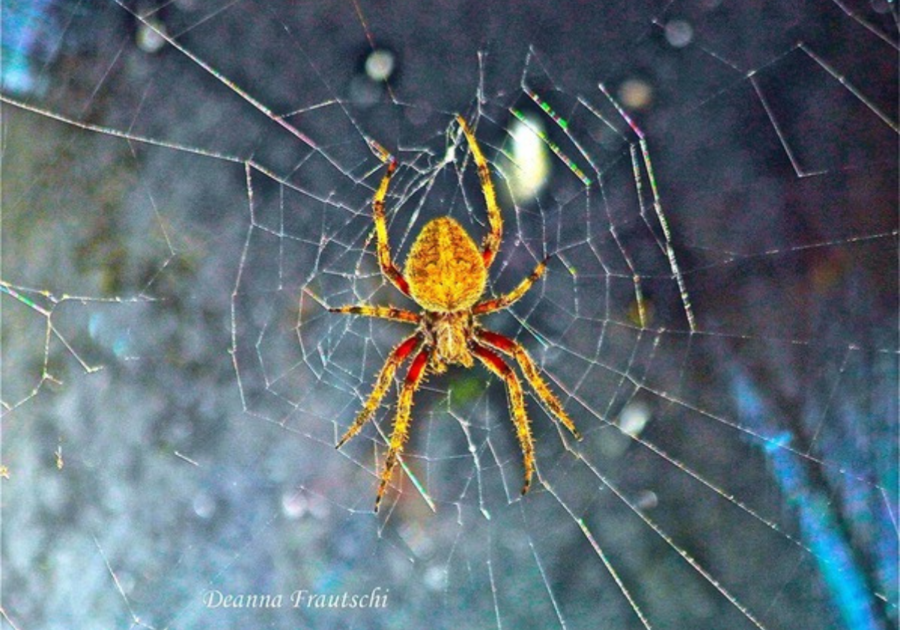Spiders…a wrinkled nose or a “yuk” is the response of many people when someone mentions their name. But spiders are really interesting creatures. And, they have their place in our natural world too.
This time of year, we often see webs close to our homes because many spiders or arachnids are catching prey while they lay eggs in egg sacs somewhere that are protected and out of the harsher elements. You can look for these sacs in webs around garage doors, under eves, and around your outside window areas.
Unfortunately for them, over ninety percent of the egg sacs filled with hundreds of eggs will succumb to weather, birds, or other predators including humans when we tear them down to clean up around the exterior of our homes.

Spiders are not bugs
Did you know spiders are not really bugs or insects? Arachnids are part of the arthropod family which includes crabs, shrimp, and lobsters. Their eight legs move them along quickly after insects and bugs. They are predators. Some lie in wait for their prey. Others catch their prey in webs.
Many spiders are gardeners’ friends because they eat other insects and bugs that destroy plants and flowers. A good place to look for spiders is around plants or a garden area. Have your children see if they can locate a spider on a plant or perhaps its web where it may have caught an insect or bug.
Often, webs designed by orb-weaving garden spiders are works of art. Encourage your children to admire these. Perhaps your children can draw a web they have seen or take photos of it.
It’s really interesting to watch garden spiders work. They typically paralyze their prey with a sting so they can wrap it in webbing and use it now or later for food. And although they can subdue prey with a sting, most are harmless to people.
Did you know spider silk is actually stronger than a strand of steel of the same size? And it’s more flexible too. That’s why hummingbirds often use it to wrap their nests so that as the young grow, the nest stretches! Scientists are always trying to figure other uses for this incredible material that spiders produce.

Most spiders are not poisonous
Though many adults seem to have a fear of spiders with “arachnophobia” being an extreme fear, most spiders are harmless to humans. In fact, when some humans make that awful face upon seeing one, most spiders are probably doing the same thing when they see us up close!
Fall is the time of year we observe lots of spiders outdoors because they know they must prepare for winter. Most will die after laying their eggs and will hope that their young survive to carry on the family. Many of the young will not survive either. These outdoor spiders prefer to stay outside so we don’t see many of these in the house.

Favorite spider story
My favorite spider story is “Charlotte’s Web” by E.B. White. Your children may have read the book or seen the movie. It’s a wonderful story of an orb weaver spider that becomes friends with a pig. That book hooked me many years ago on how delightful spiders could be as a part of our natural world. Later I learned more facts about these arachnids who live around us.
Children are often fascinated with spiders because they often have seen them represented in movies or shows. Some representations can be scary or inaccurate so it’s important that we give them a truer picture of spiders as a part of the natural world around us.
Deanna Frautschi is a local Master Naturalist who is passionate about connecting families with nature. Using her knowledge of wildlife and her photography skills, she helps others enjoy the nature around them. If you have any questions about exploring nature with your children and grandchildren, you may contact Deanna at Decardinal@aol.com. Join the hundreds who follow her on Facebook where she posts photographs and short video clips of birds and other wildlife taken on her travels as well as in her yard. You can also join her "Hummingbirds Anonymous" Facebook group page.
Story and photos by Deanna Frautschi.



